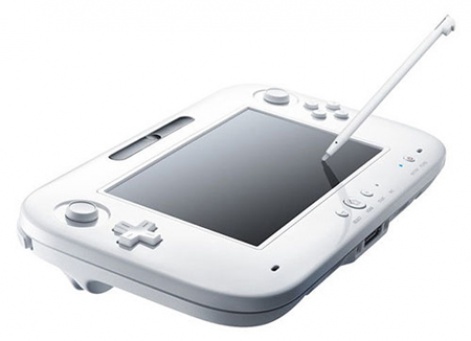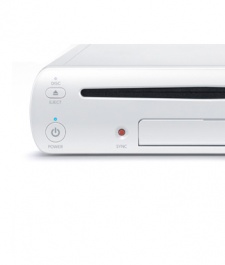One of the main concerns doing the rounds about the Wii U's centrepiece Gamepad is whether it's intuitive enough to attract the wide audience that the original did so effortlessly.
When it came to the original Wii, you just knew that anyone from your doddering old grandma to a small child could wield a Wii remote with aplomb.
But in the case of Wii U, the perception is that its GamePad is a return to the 'bad old days' of complicated multi-button controllers that instantly put off anyone who isn't already fluent in the language of videogames.
There's a certain amount of truth in that, but it's also fair to say that the Wii U's touchscreen and compatibility with existing Wii Remotes make the learning curve rather easier than it may have otherwise been.
Non-issue
For me as a user, it's a bit of a non-issue.
When it comes to playing and organising multiplayer party games on the Wii U, the chances are the more casual gamers will still be wielding Wii Remotes like before, while more experienced gamers will be on hand to get people used to the new controller.
And once you go actually get over your initial pre-conceptions, the GamePad is a lovely piece of kit that comfortably sits in the palm of your hand and essentially combines all the available touch and tilt control innovations with the established physical dual stick controls that preceded it.
Well, that's the theory, at least.
Although my time with Nintendo's new system so far has been overwhelmingly positive, I can't help but wonder about the logic of some of the corner-cutting of not making the GamePad a capacitive, multitouch screen.
Sure, the physical manufacturing cost involved of the GamePad will certainly account for some of the limitations (including the rather limited 854x480 resolution), but the decision to only recognise a single touch resistive input is one that may come back to haunt Nintendo further down the line.
Great expectations
Over the last five years or so, all the major touchscreen tablets and smartphones have set a level of expectation that have become fully engrained into our latent understanding of how these devices should function by default.
So for Nintendo to come along in 2012 with a device that doesn't match up to those expectations is a strange decision - especially as so many games have been designed around the basic requirements of multitouch.
Any attempt by developers to craft multitouch games on the Wii U will be met with frustrating failure, which ultimately limits their ambitions in ways that jar with any otherwise highly capable, brilliantly thought-out system that combines so much.
Right now, it probably doesn't seem like much of a big deal.
The headline launch releases (Zombi U, Nintendo Land, Super Mario Bros. U) use the hardware fantastically well, and when you're playing them, you certainly won't even notice (or care) that multi touch isn't present.
So what's the problem? Well, what if a popular iOS/Android franchise dependent on multi touch controls comes to Wii U?
At the very least, a degree of redesign will have to be undertaken, and replacing touch controls with physical alternatives won't necessarily always be a positive thing.
Case by case
Of course, the degree of impact on the game design will vary wildly on a case-by-case basis.
A lot of games (such as perennial favourite Angry Birds) are simple enough to require just one-touch control. Others may actually benefit from having physical controls added to them (Super Crate Box on PS Vita, being one notable recent example), while some may end up worse to a greater or lesser extent.
More likely, it'll be evident that certain Wii U specific titles may have been improved through multi-touch gestures. But with that avenue of design closed off to developers, how much will Nintendo come to regret leaving out such standard touchscreen functionality?
It might not seem like a big deal now, but how old fashioned will the Wii U's GamePad's touchscreen look five years down the line? Or will it be another case of Nintendo succeeding despite limitations, as it managed to so spectacularly with the Wii? Only a fool ever writes off Nintendo.
That said, there's far more competition now than ever, and while building a home console around a tablet controller is a fantastic idea, its lack of portability outside of the living room is not.
Portable potential
If the Wii U's GamePad could also function as a portable gaming system to be used outside of the home like a beefier DS, I could see that being an absolute world beater. Being able to play games on the TV then continue them on your travels would be magical.
One of the main reasons tablets like the iPad have been so astonishingly popular this past couple of years is their inherent flexibility - and not simply their portability.
They justify their price tag through form and functionality. So the fact that you can only use the Wii U's tablet to play games, and only play them in the home makes it harder to justify, especially when our collective spend has been already allocated elsewhere.
I generally applaud Nintendo's resolute focus on making gaming machines, rather than entertainment systems. I'm sick to death of Microsoft trying to foist non-gaming stuff at me on the 360, and the inability to customise that console's desktop to remove all of this annoys every time it's switched on.
So if Nintendo really wants to make gaming system for gamers, it needs to realise that today's and tomorrow's market is about flexibility. The frustrating thing is that it has got so close to doing that with the Wii U.
Ties that bind
The Wii U combines tablet, motion and old school physical controls in a bold, innovative and intuitive way.
It ties together all the contrasting strands of videogaming into one, and yet Nintendo stops fractionally short of making the kind of product that could have brilliantly serviced both the home and portable gaming market at the same time.
What we've seen on our side of the fence at Pocket Gamer in recent years is that there's no longer a convenient divide between what is considered home and console gaming.
The lines have blurred to the extent that much of what we used to consider 'pocket' gaming now takes place as much in the home as it does out of it. It's all part of the same ecosystem.
The problem for Nintendo, of course, is that making an 'all-in-one' product would instantly cannibalise sales of its extremely lucrative 3DS.
The Wii U might well fit neatly into that dual-pronged strategy from Nintendo's perspective, but in the long run, curtailing the Wii U's ambition might prove to be short-sighted.























